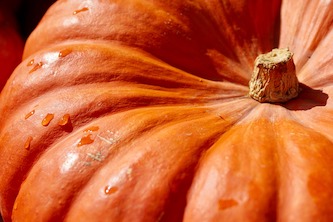A new study from Italy says many people might think they are not too heavy when they really are. The study looked at body fat instead of just weight and height. It found that more people are actually obese than we thought. The researchers say we should use body fat to see who is really at risk. This can help find people who might get sick because of too much fat.
Right now, we use something called BMI to see if someone is too heavy. But BMI doesn’t tell us if the weight is from fat or muscle. The study says looking at body fat is better for older people. They think we should change the BMI number to find out who is obese. More studies are needed to see if this is true for everyone.
Original news source: Millions more middle-aged are obese, study suggests (BBC)
🎧 Listen:
Slow
Normal
Fast
📖 Vocabulary:
| 1 | study | Learning about something by looking at it closely |
| 2 | obese | Very, very heavy |
| 3 | researchers | People who find out new things by studying |
| 4 | risk | The chance that something bad might happen |
| 5 | BMI | A number that tells if you are too heavy or not |
| 6 | muscle | The strong parts of your body that help you move |
| 7 | older | People who have lived for many years |
| 8 | change | To make something different |
| 9 | needed | Something that is wanted or important |
| 10 | true | Something that is real or correct |
Group or Classroom Activities
Warm-up Activities:
– Charades
Instructions: In this activity, students will take turns acting out different actions related to the article. They must use body language and gestures to communicate the action without speaking. The rest of the class must guess what action they are acting out.
– News Summary
Instructions: Divide the class into pairs. Each pair will take turns summarizing the main points of the article to their partner. They should try to include as much information as possible in a limited amount of time. After both partners have had a chance to summarize, they can compare their summaries and discuss any differences.
– Opinion Poll
Instructions: Create a list of questions related to the article, such as “Do you think using body fat is a better indicator of obesity than BMI?” or “Should the BMI number be changed to determine obesity?” Have students go around the class and ask their classmates these questions, recording their answers. Afterward, they can share the results and discuss any differences in opinions.
– Vocabulary Pictionary
Instructions: Write down key vocabulary words from the article on separate slips of paper and put them in a hat or container. Divide the class into teams. One member from each team will take turns drawing a slip of paper and trying to draw the word without using any letters or numbers. The rest of their team must guess the word based on the drawing.
– Speed Summarizing
Instructions: Divide the class into pairs. Give each pair a timer and set a time limit (e.g., one minute). One student will summarize the article to their partner as quickly as possible within the time limit. After the time is up, the roles will switch and the other student will summarize. The pair that can summarize the article in the shortest amount of time wins.
🤔 Comprehension Questions:
1. What did the study from Italy look at instead of just weight and height?
2. What did the study find about how many people are actually obese?
3. Why do the researchers say we should use body fat to see who is really at risk?
4. What do we use right now to see if someone is too heavy?
5. What does BMI tell us about someone’s weight?
6. Who do the researchers think looking at body fat is better for?
7. What do the researchers think we should change to find out who is obese?
Go to answers ⇩
🎧✍️ Listen and Fill in the Gaps:
A new study from Italy says many (1)______ might think they are not too (2)______ when they really are. The study looked at body fat instead of just weight and height. It found that (3)______ people are actually (4)______ than we thought. The researchers say we should use body fat to see who is really at risk. This can help find people who might get sick because of too much fat.
Right now, we use something called BMI to see if someone is too heavy. But BMI doesn’t tell us if the weight is from fat or (5)______. The (6)______ says looking at body fat is better for older people. They think we should (7)______ the BMI number to (8)______ out who is obese. More studies are needed to see if this is true for everyone.
Go to answers ⇩
💬 Discussion Questions:
Students can ask a partner these questions, or discuss them as a group.
1. What is body fat?
2. How would you feel if you found out you were heavier than you thought?
3. Do you like to eat healthy food?
4. Do you think it’s important to know if you have too much body fat?
5. Why or why not?
6. What is BMI?
7. How would you feel if you were told you had a high BMI?
8. Do you think it’s better to look at body fat or BMI to know if someone is too heavy?
9. Why or why not?
10. Have you ever heard of someone getting sick because of too much fat?
11. How would you feel if you were told you were obese?
12. Do you think it’s important to do more studies on this topic? Why or why not?
Individual Activities
📖💭 Vocabulary Meanings:
Match each word to its meaning.
Words:
1. study
2. obese
3. researchers
4. risk
5. BMI
6. muscle
7. older
8. change
9. needed
10. true
Meanings:
(A) Very, very heavy
(B) The chance that something bad might happen
(C) A number that tells if you are too heavy or not
(D) Something that is real or correct
(E) The strong parts of your body that help you move
(F) People who find out new things by studying
(G) To make something different
(H) Learning about something by looking at it closely
(I) People who have lived for many years
(J) Something that is wanted or important
Go to answers ⇩
🔡 Multiple Choice Questions:
1. What did the study from Italy look at instead of just weight and height?
(a) Muscle
(b) Body fat
(c) Age
(d) Gender
2. What did the study find about the number of obese people?
(a) More people are actually obese than we thought
(b) Less people are actually obese than we thought
(c) The same number of people are obese as we thought
(d) The study didn’t find anything about obesity
3. What can using body fat help find in people?
(a) People who are really tall
(b) People who are really strong
(c) People who might get sick because of too much fat
(d) People who are really young
4. What do we currently use to see if someone is too heavy?
(a) Body fat
(b) BMI
(c) Height
(d) Weight
5. What does BMI not tell us about someone’s weight?
(a) If the weight is from fat or muscle
(b) If the weight is from food or exercise
(c) If the weight is from water or air
(d) If the weight is from clothes or shoes
6. Who is looking at body fat better for?
(a) Younger people
(b) Tall people
(c) Short people
(d) Older people
7. What does the study suggest we should change to find out who is obese?
(a) The weight number
(b) The height number
(c) The BMI number
(d) The body fat number
8. What do we need more studies to find out?
(a) If looking at body fat is false for everyone
(b) If looking at body fat is true for some people
(c) If looking at body fat is false for some people
(d) If looking at body fat is true for everyone
Go to answers ⇩
🕵️ True or False Questions:
1. Right now, we use something called BMI to see if someone is too heavy.
2. This can help find people who might get sick because of too much fat.
3. The study focused on body mass rather than just weight and height.
4. The study revealed that fewer people are actually obese than we thought.
5. A study from Italy says that many people might think they are not too heavy when they really are.
6. The study says looking at body fat is better for older people.
7. The researchers suggest we should use BMI to determine who is truly at risk.
8. But BMI does tell us if the weight is from fat or muscle.
Go to answers ⇩
📝 Write a Summary:
Write a summary of this news article in two sentences.
Check your writing now with the best free AI for English writing!
Writing Questions:
Answer the following questions. Write as much as you can for each answer.
Check your answers with our free English writing assistant!
1. What did the study from Italy look at instead of just weight and height?
2. What did the study find about the number of obese people?
3. What does the study say is better for older people?
4. What is the problem with using BMI to see if someone is too heavy?
5. What do the researchers think should be changed to find out who is obese?
✅ Answers
🤔✅ Comprehension Question Answers:
1. What did the study from Italy look at instead of just weight and height?
The study looked at body fat.
2. What did the study find about how many people are actually obese?
The study found that more people are actually obese than we thought.
3. Why do the researchers say we should use body fat to see who is really at risk?
The researchers say we should use body fat to see who is really at risk because it can help find people who might get sick because of too much fat.
4. What do we use right now to see if someone is too heavy?
We use something called BMI (Body Mass Index) right now to see if someone is too heavy.
5. What does BMI tell us about someone’s weight?
BMI tells us if someone is too heavy, but it doesn’t tell us if the weight is from fat or muscle.
6. Who do the researchers think looking at body fat is better for?
The researchers think looking at body fat is better for older people.
7. What do the researchers think we should change to find out who is obese?
The researchers think we should change the BMI number to find out who is obese.
Go back to questions ⇧
🎧✍️✅ Listen and Fill in the Gaps Answers:
(1) people
(2) heavy
(3) more
(4) obese
(5) muscle
(6) study
(7) change
(8) find
Go back to questions ⇧
📖💭✅ Vocabulary Meanings Answers:
1. study
Answer: (H) Learning about something by looking at it closely
2. obese
Answer: (A) Very, very heavy
3. researchers
Answer: (F) People who find out new things by studying
4. risk
Answer: (B) The chance that something bad might happen
5. BMI
Answer: (C) A number that tells if you are too heavy or not
6. muscle
Answer: (E) The strong parts of your body that help you move
7. older
Answer: (I) People who have lived for many years
8. change
Answer: (G) To make something different
9. needed
Answer: (J) Something that is wanted or important
10. true
Answer: (D) Something that is real or correct
Go back to questions ⇧
🔡✅ Multiple Choice Answers:
1. What did the study from Italy look at instead of just weight and height?
Answer: (b) Body fat
2. What did the study find about the number of obese people?
Answer: (a) More people are actually obese than we thought
3. What can using body fat help find in people?
Answer: (c) People who might get sick because of too much fat
4. What do we currently use to see if someone is too heavy?
Answer: (b) BMI
5. What does BMI not tell us about someone’s weight?
Answer: (a) If the weight is from fat or muscle
6. Who is looking at body fat better for?
Answer: (d) Older people
7. What does the study suggest we should change to find out who is obese?
Answer: (c) The BMI number
8. What do we need more studies to find out?
Answer: (d) If looking at body fat is true for everyone
Go back to questions ⇧
🕵️✅ True or False Answers:
1. Right now, we use something called BMI to see if someone is too heavy. (Answer: True)
2. This can help find people who might get sick because of too much fat. (Answer: True)
3. The study focused on body mass rather than just weight and height. (Answer: False)
4. The study revealed that fewer people are actually obese than we thought. (Answer: False)
5. A study from Italy says that many people might think they are not too heavy when they really are. (Answer: True)
6. The study says looking at body fat is better for older people. (Answer: True)
7. The researchers suggest we should use BMI to determine who is truly at risk. (Answer: False)
8. But BMI does tell us if the weight is from fat or muscle. (Answer: False)
Go back to questions ⇧













